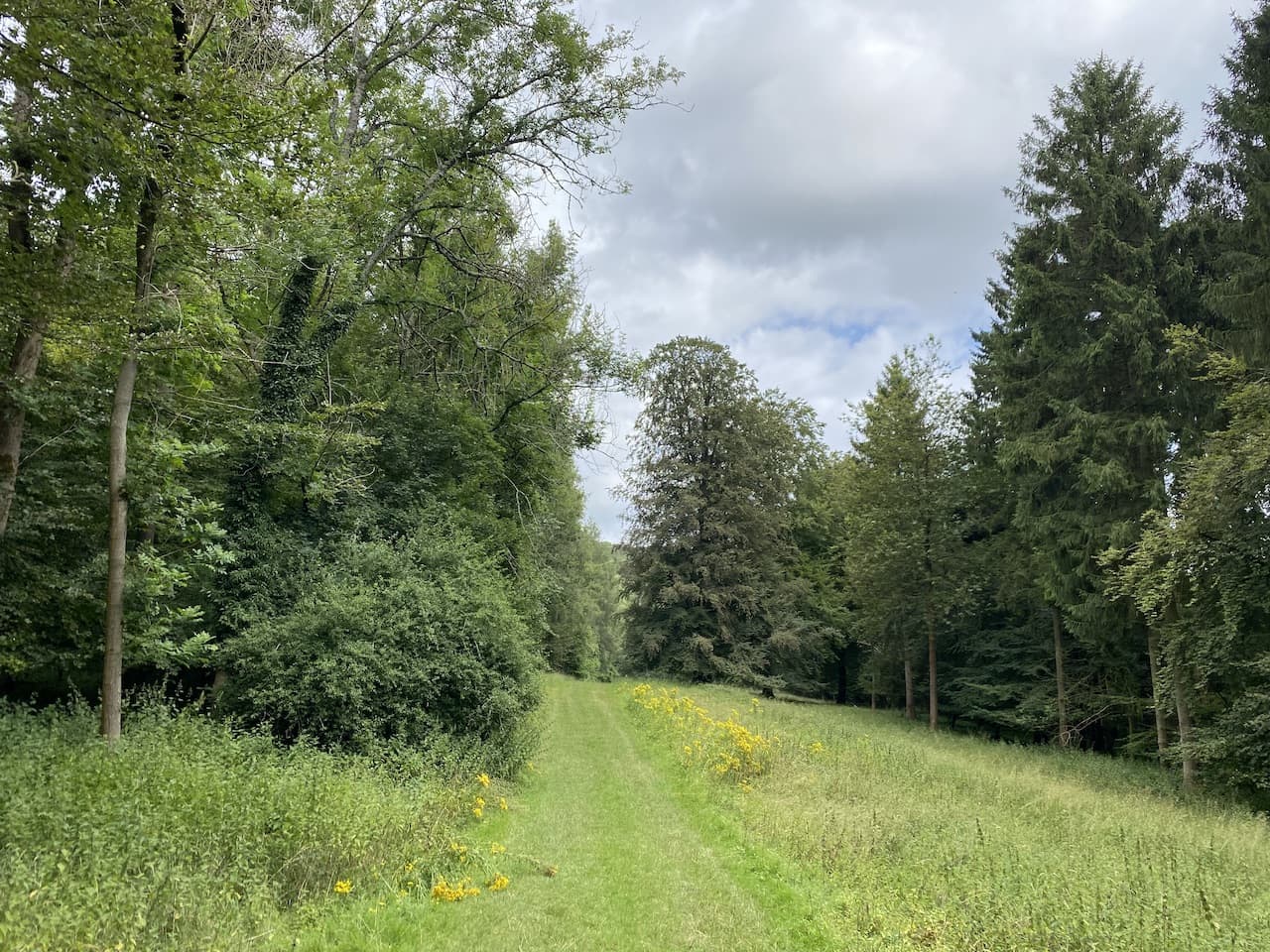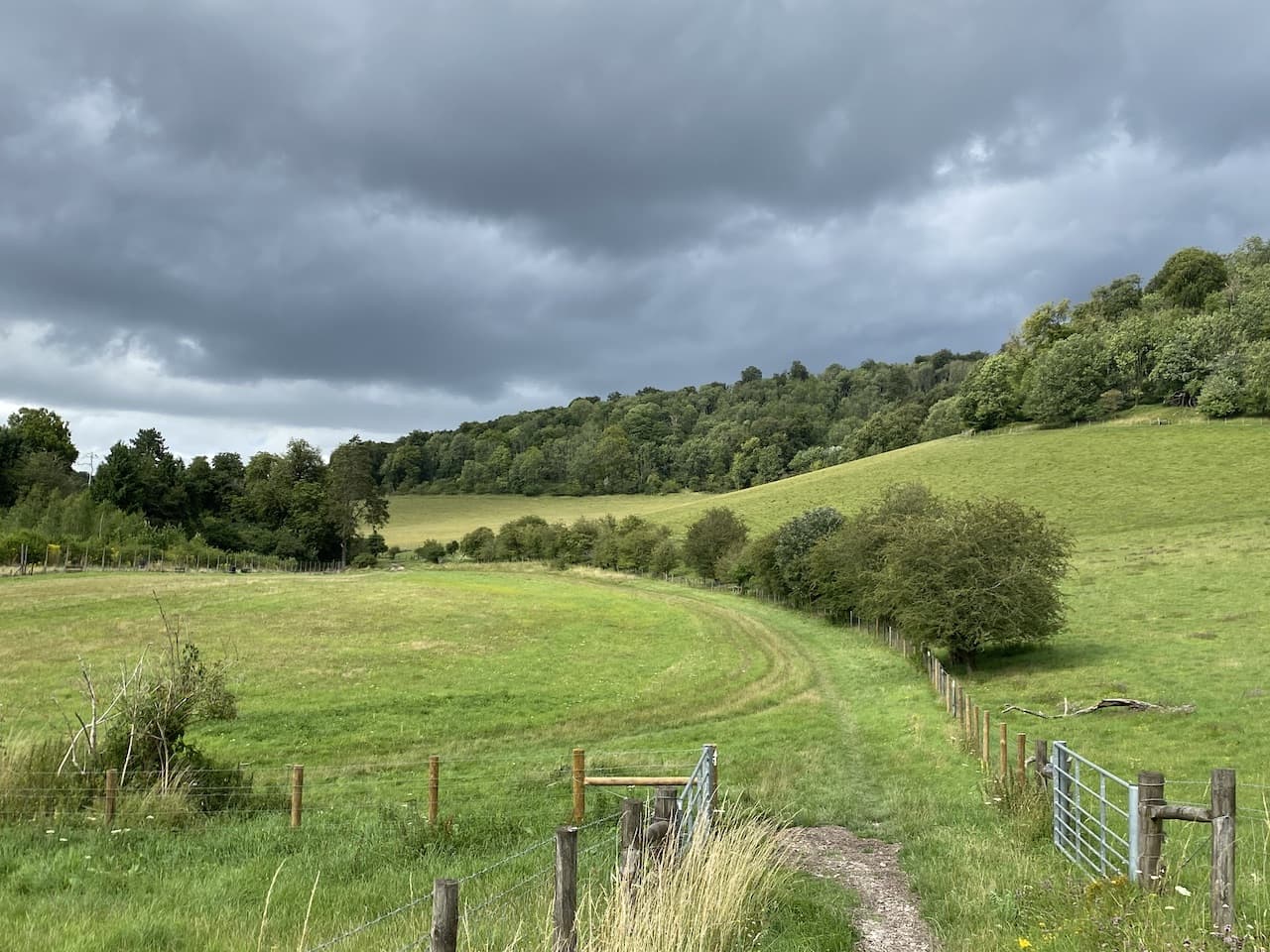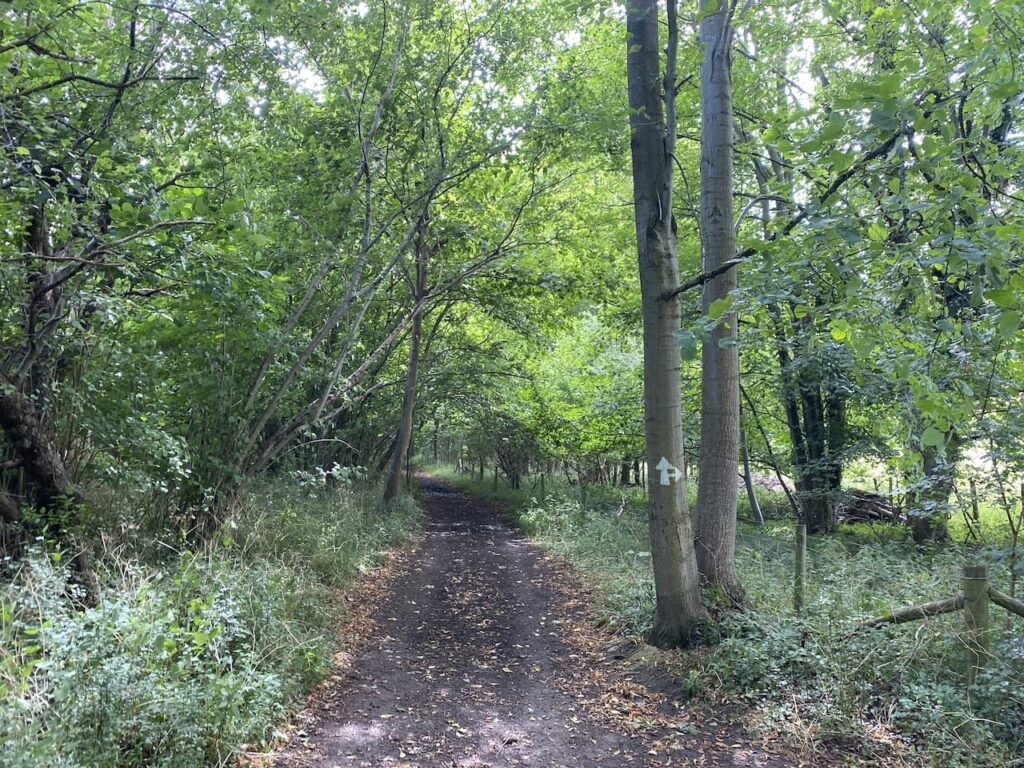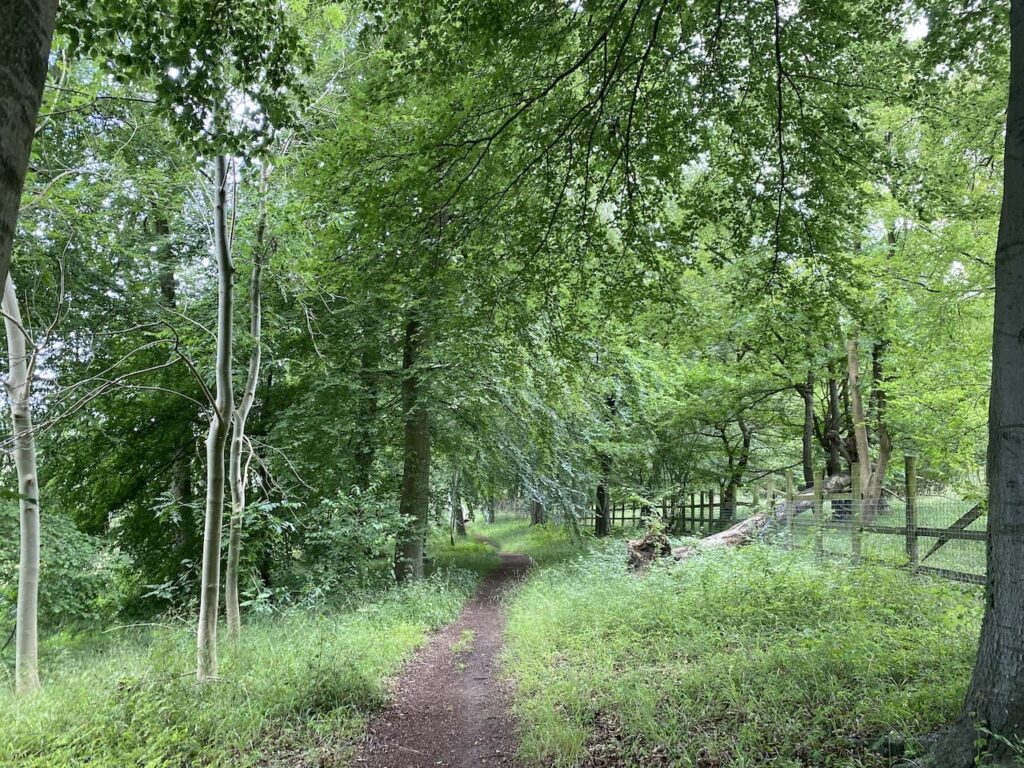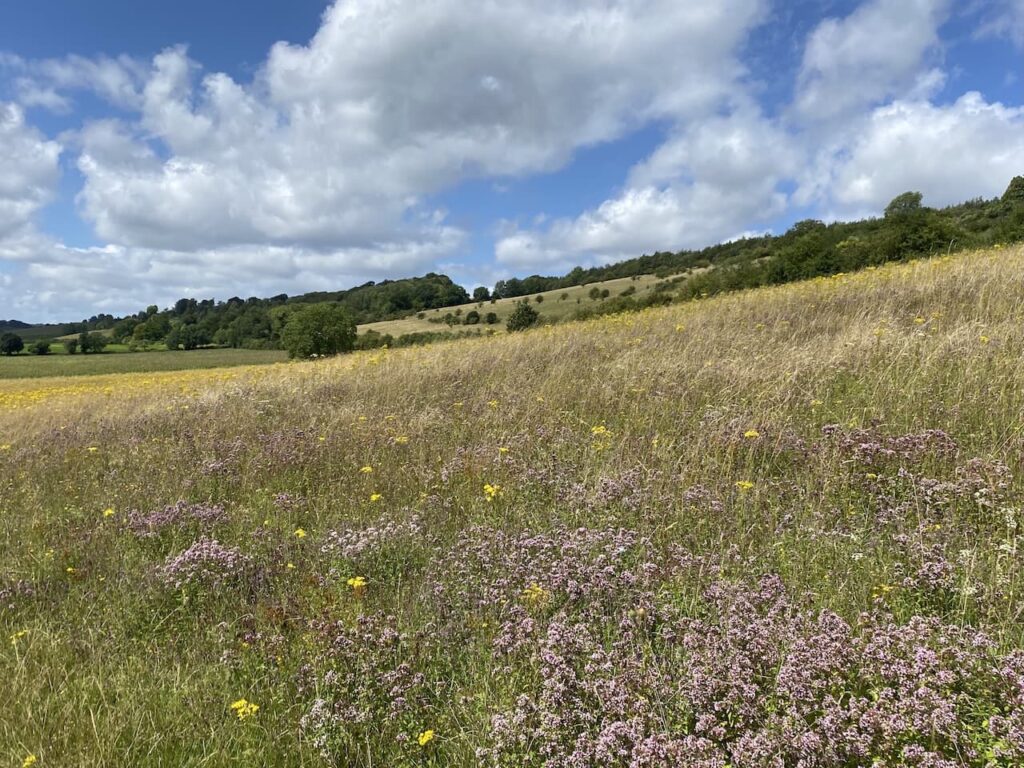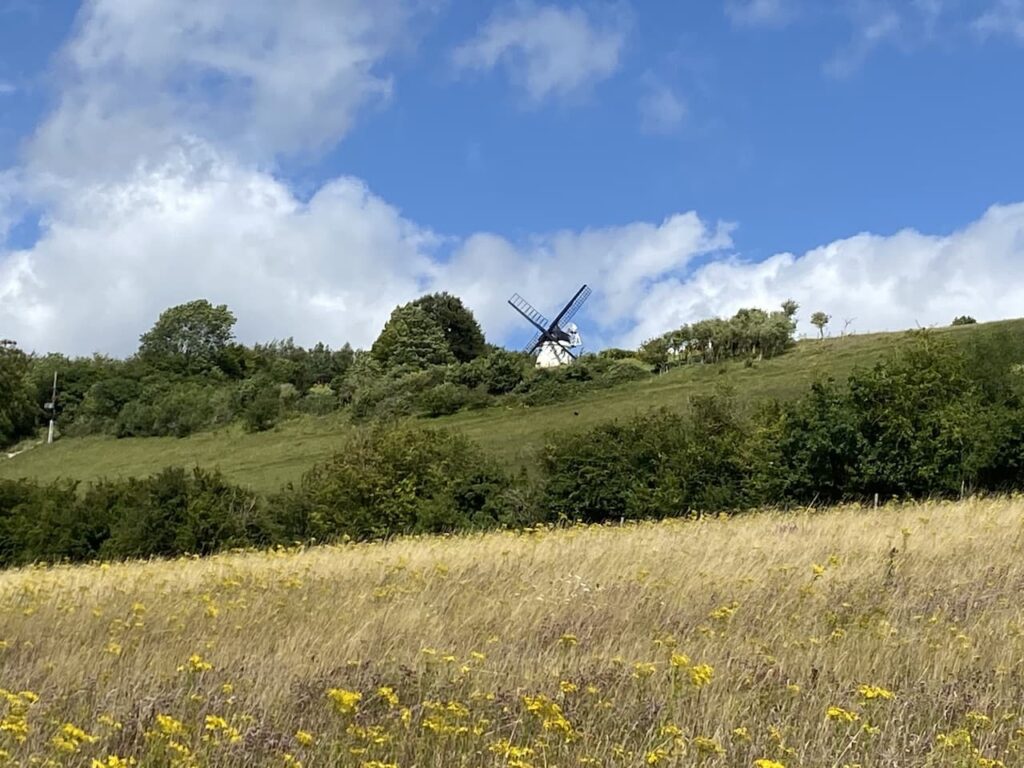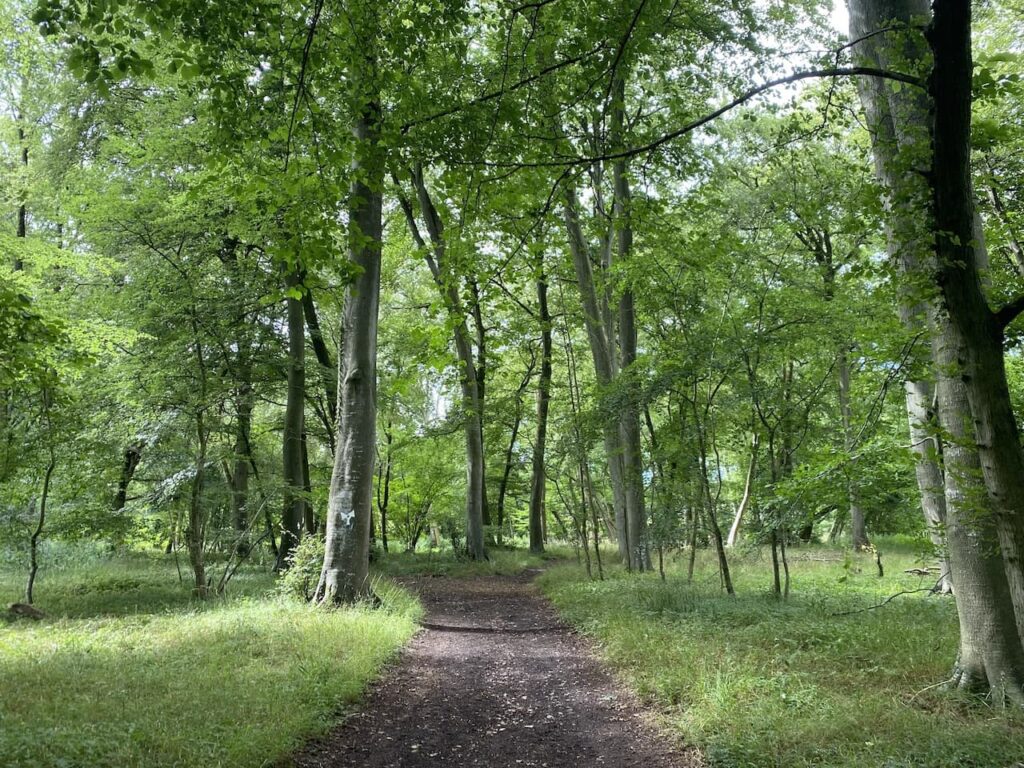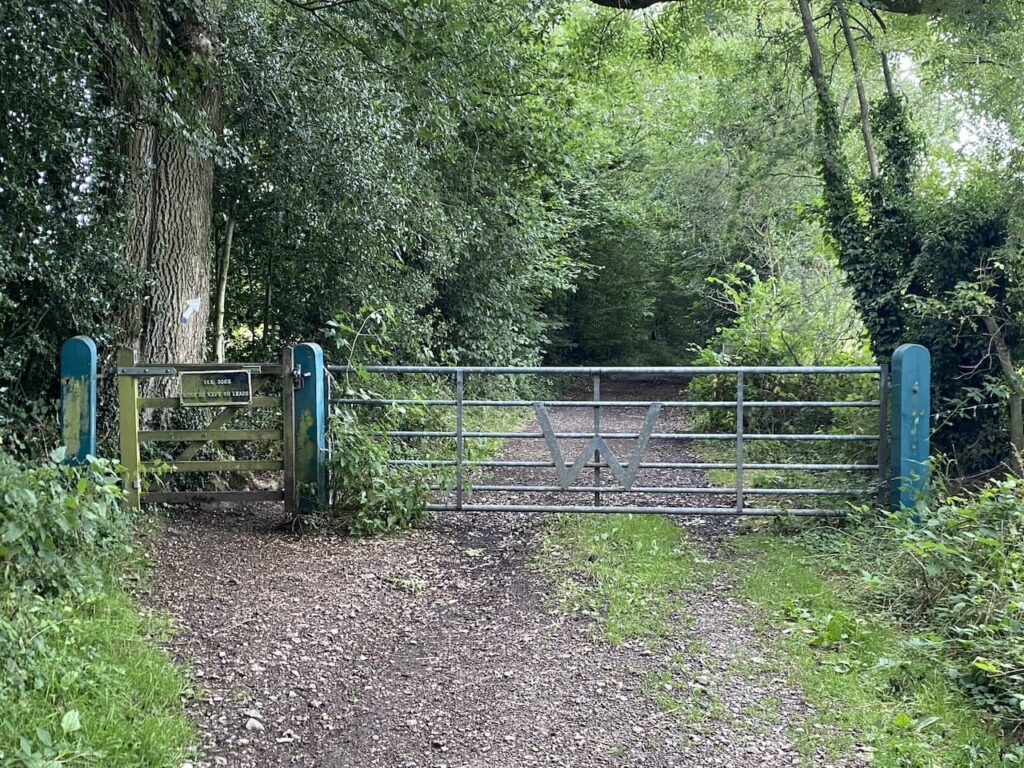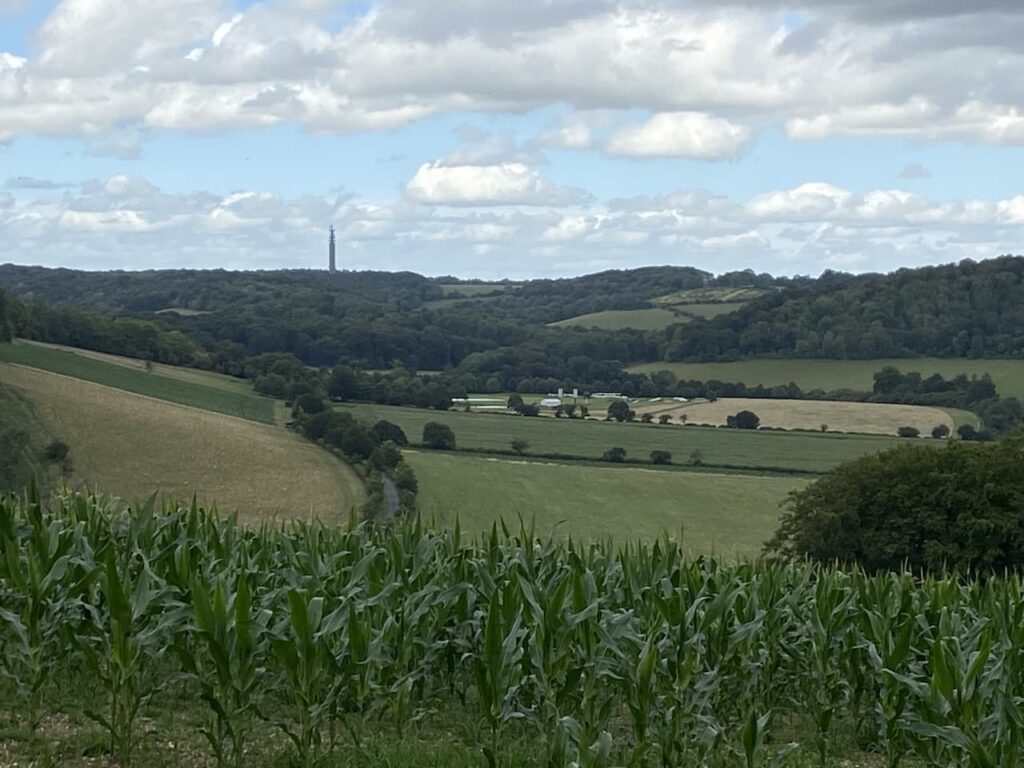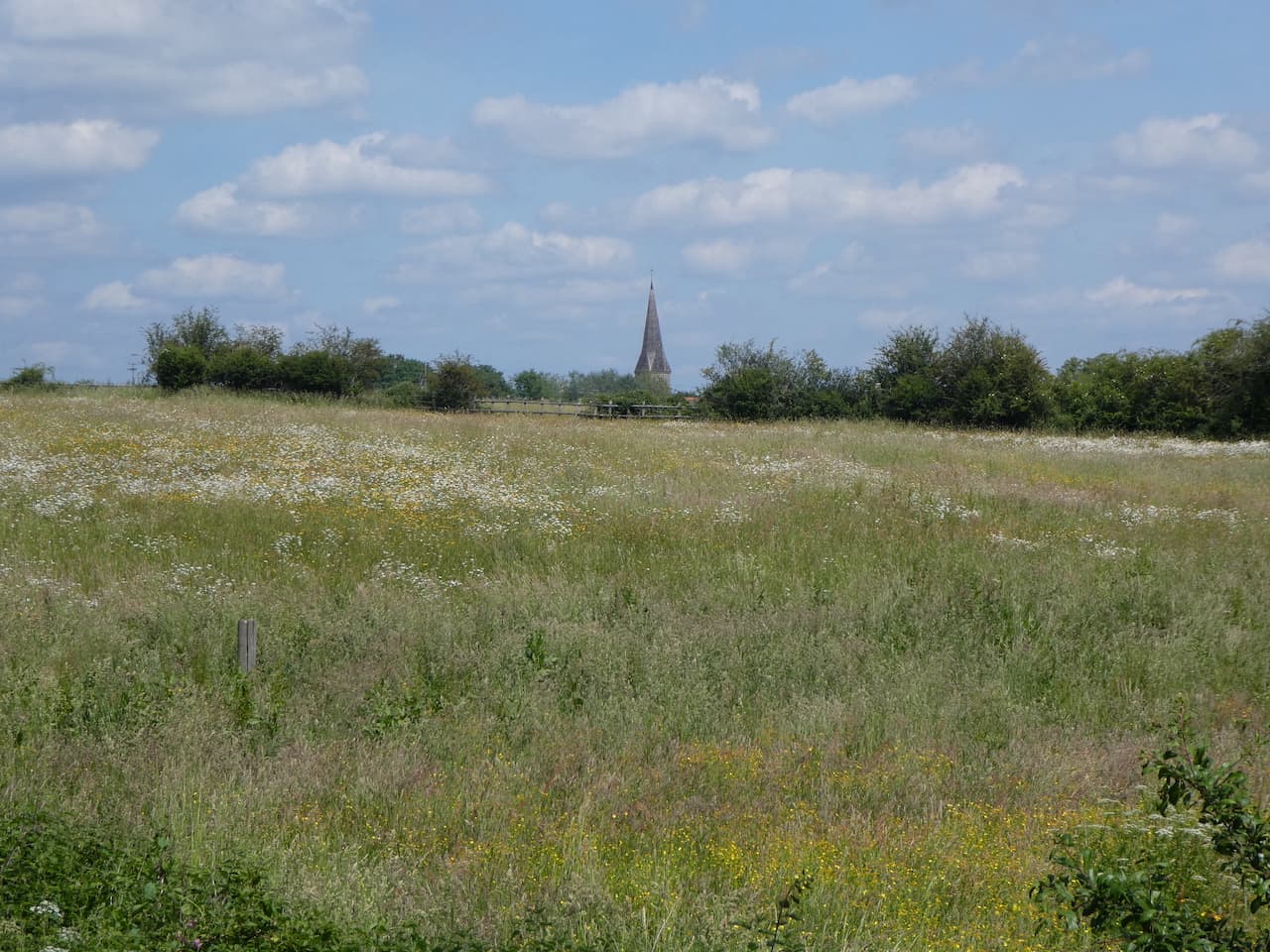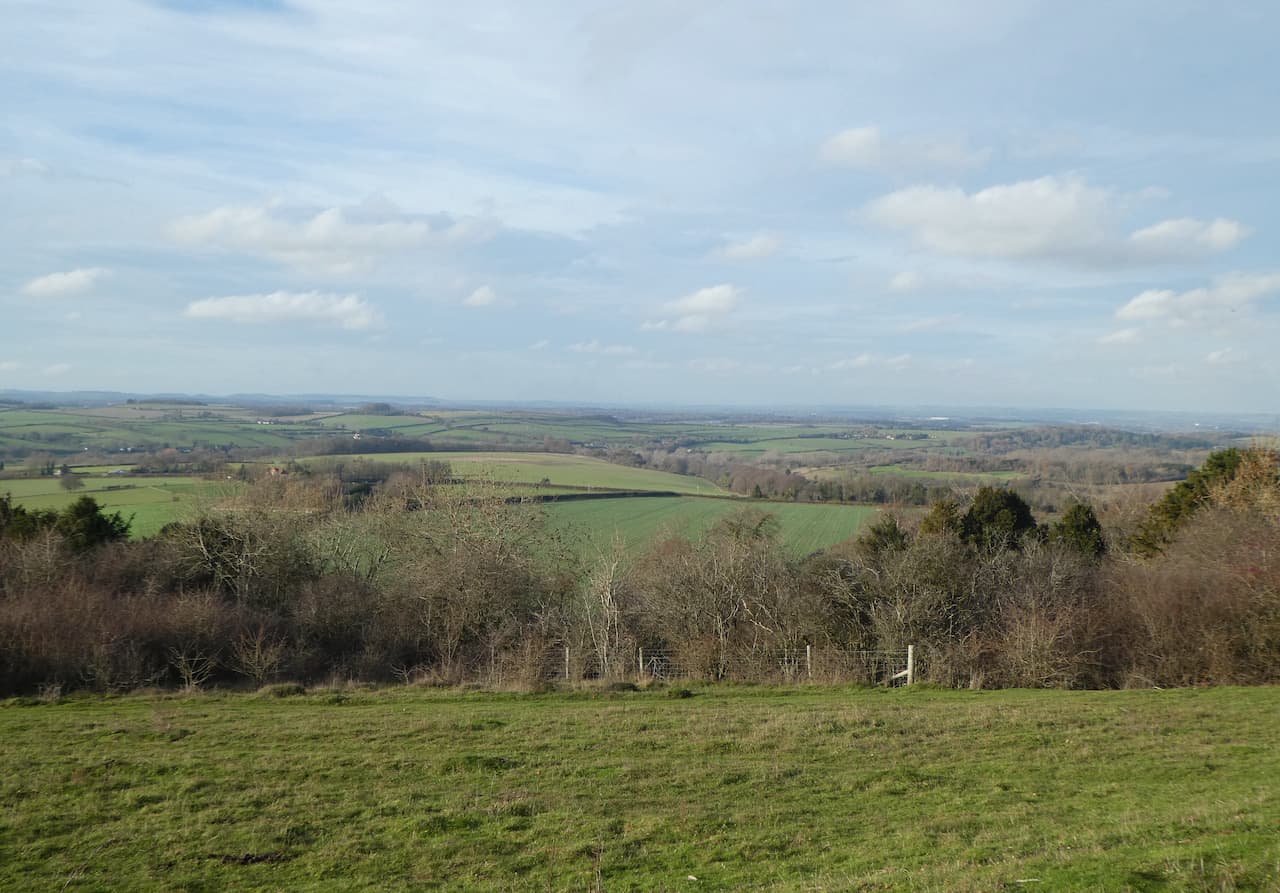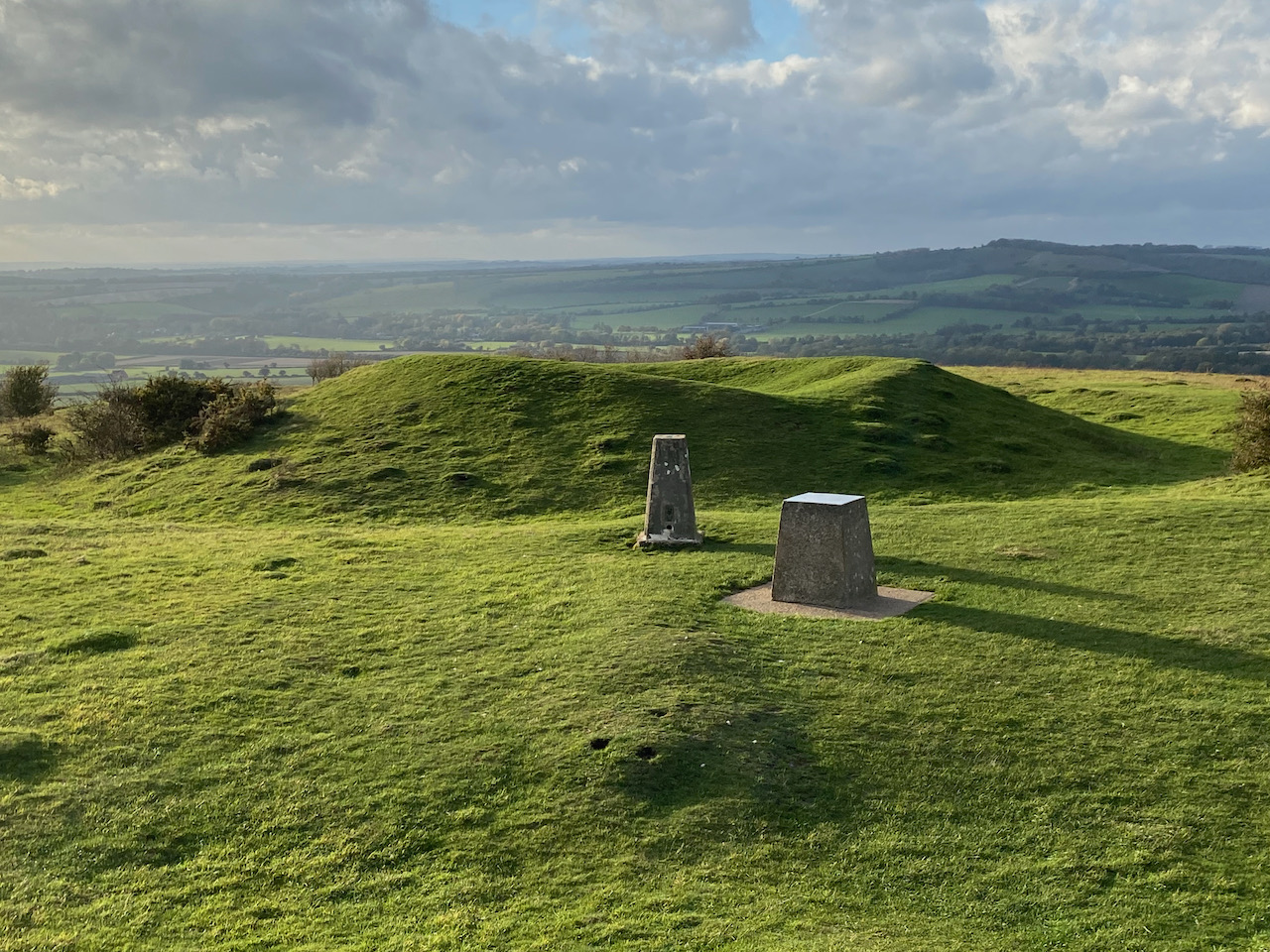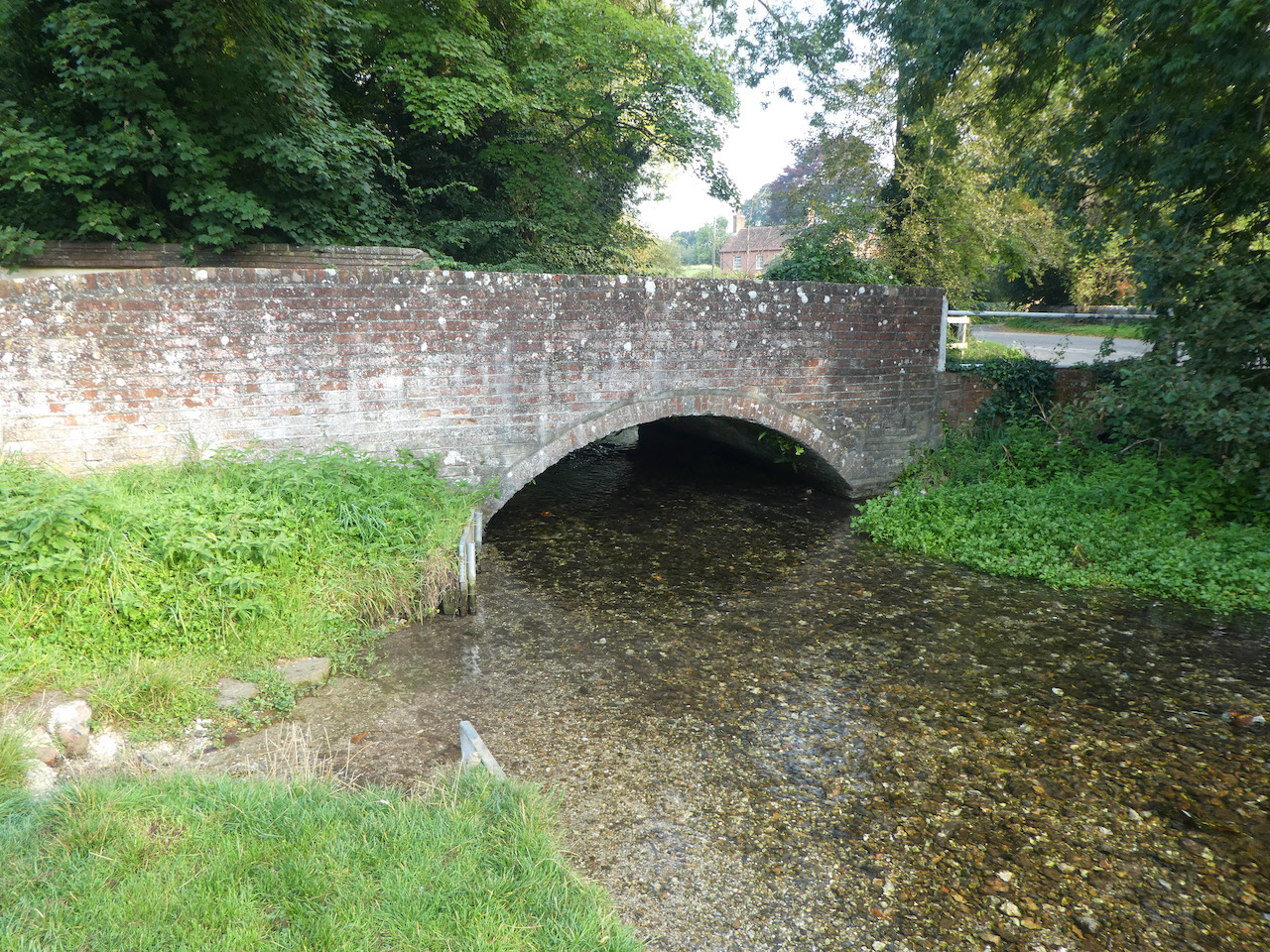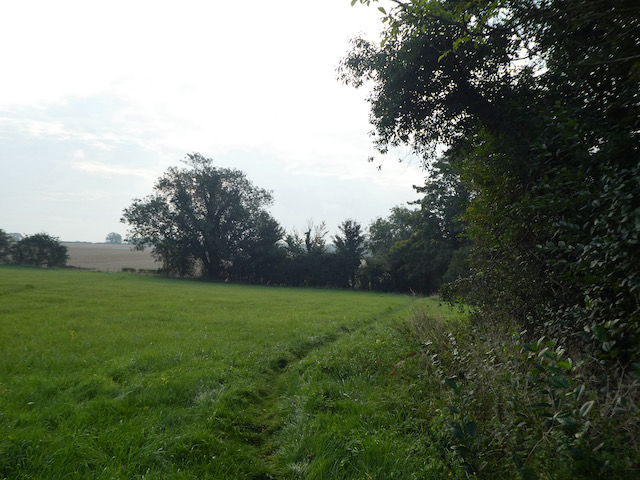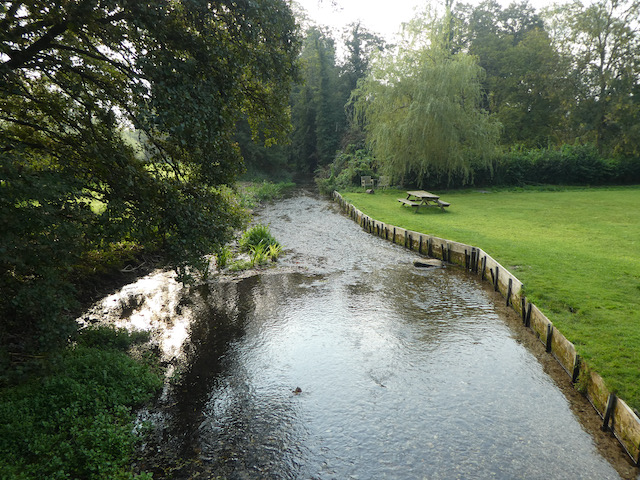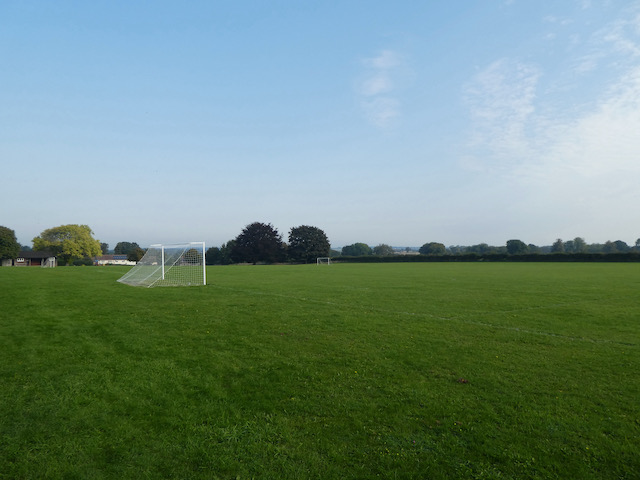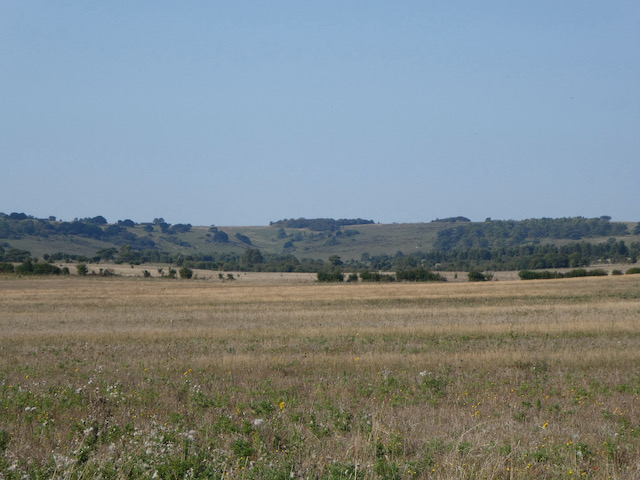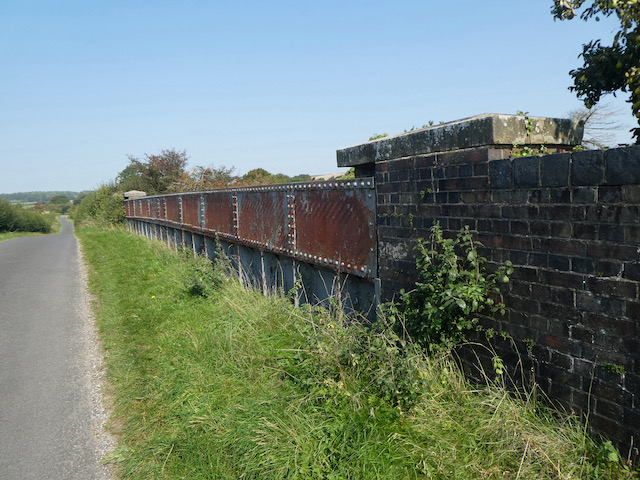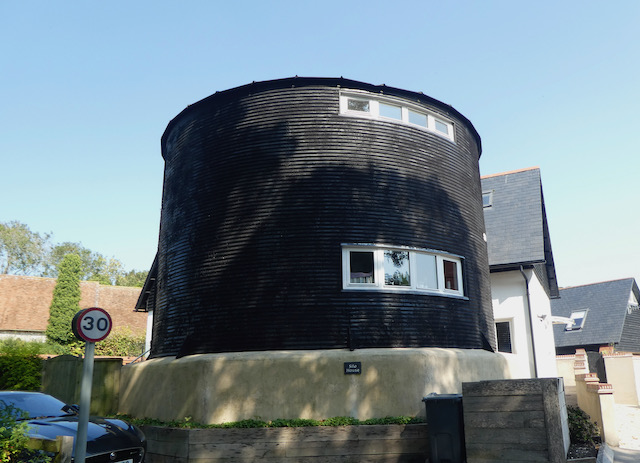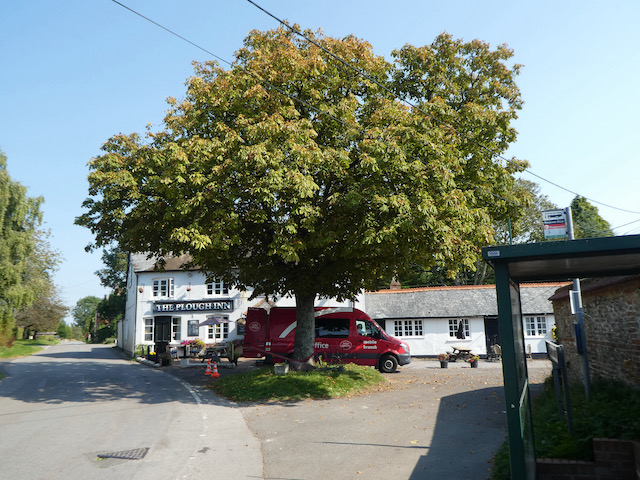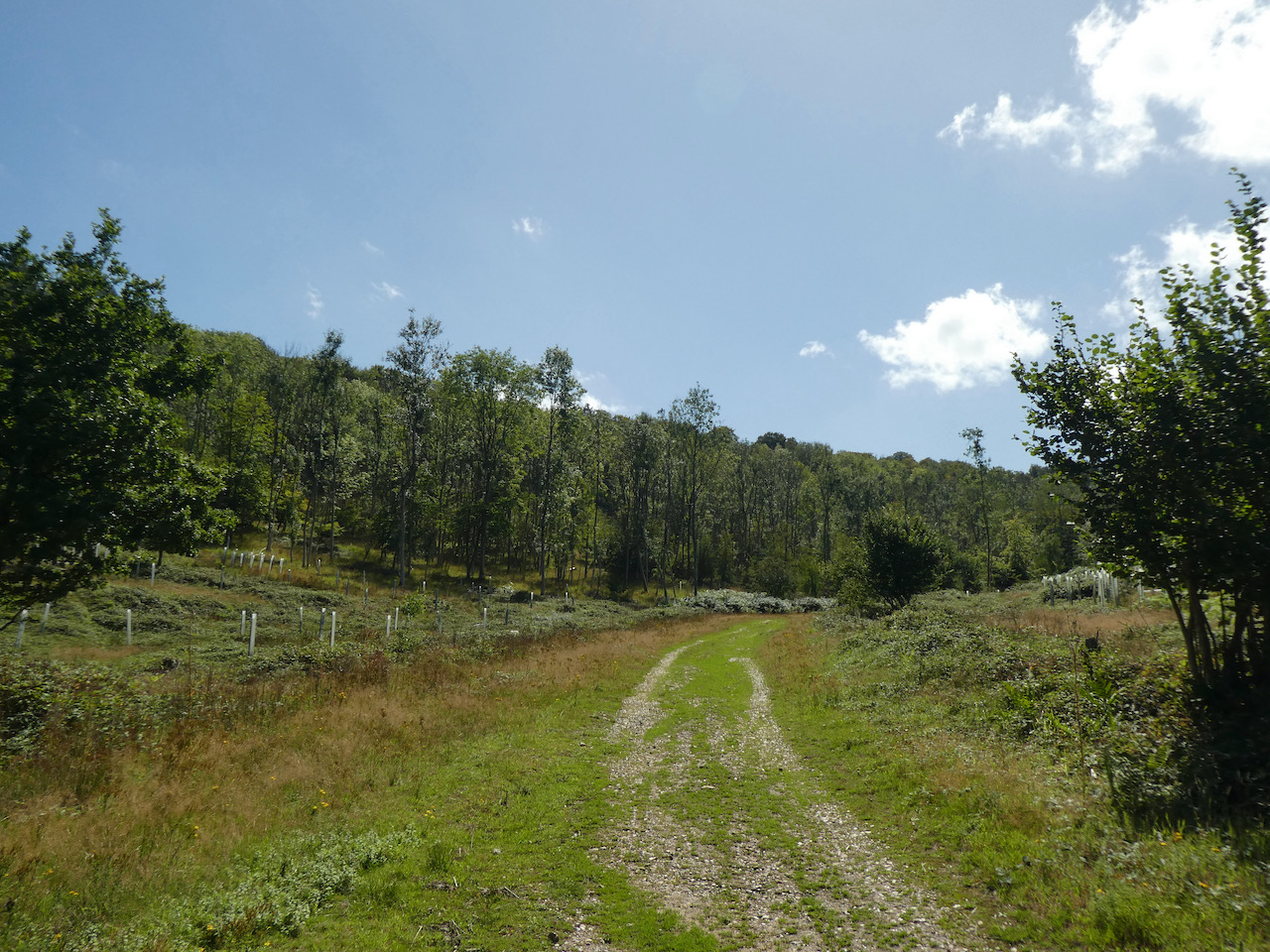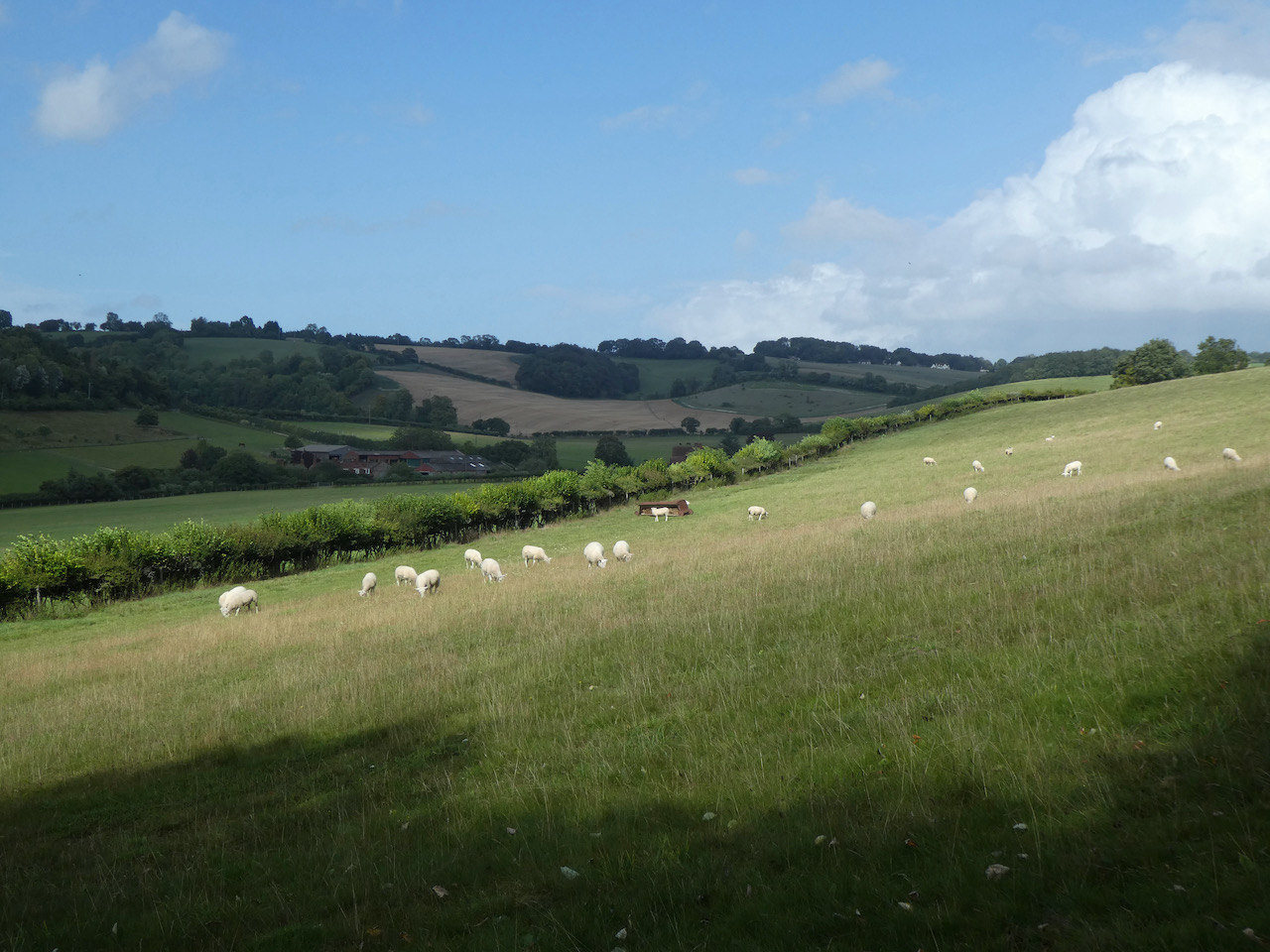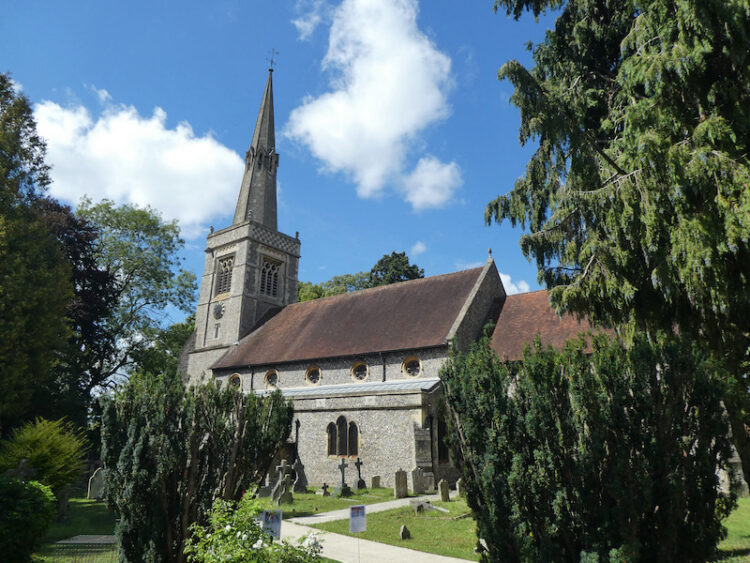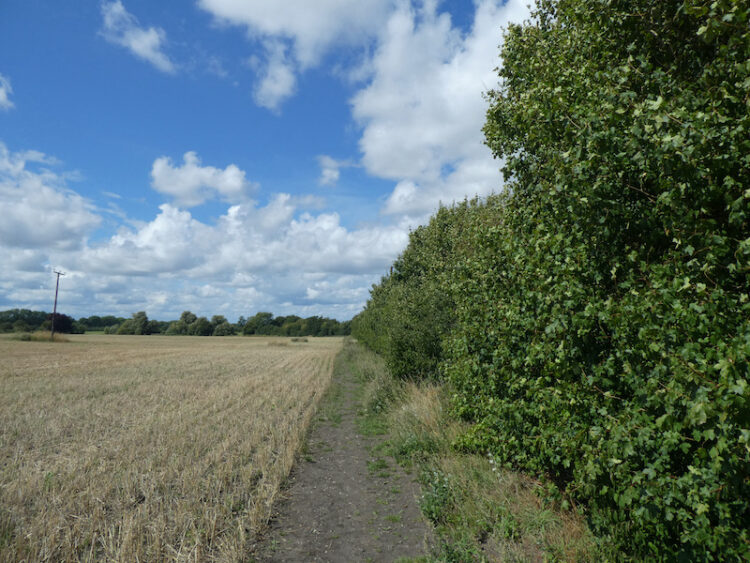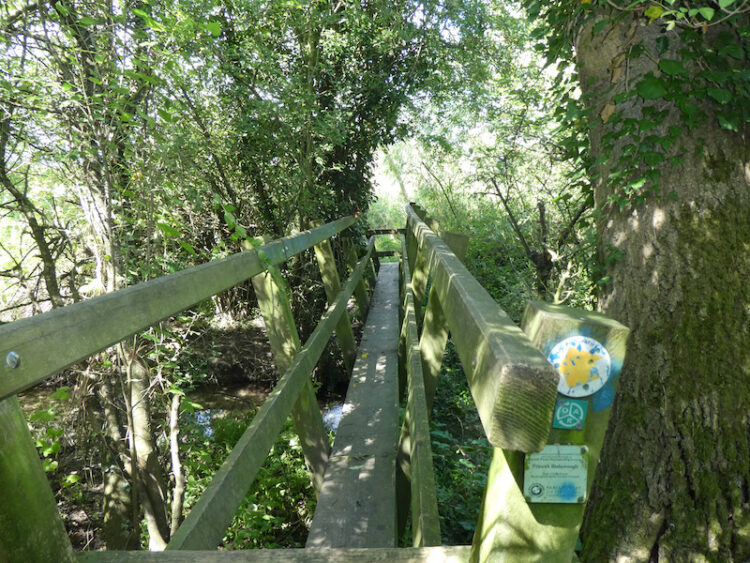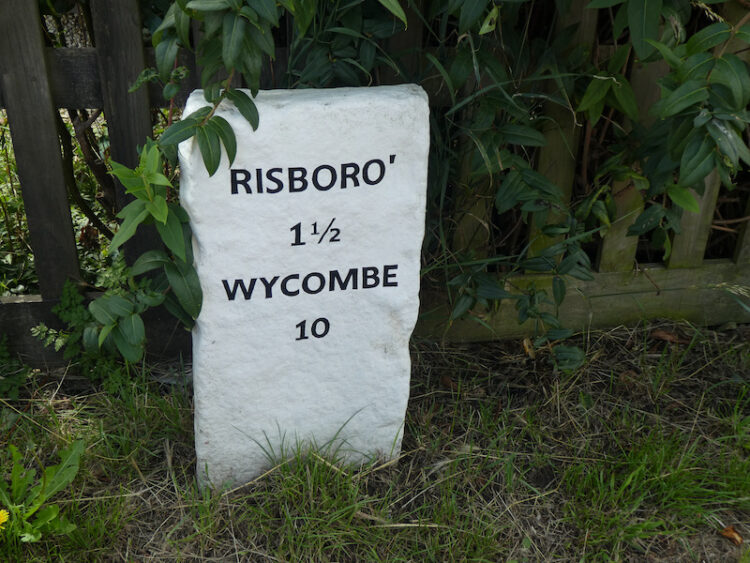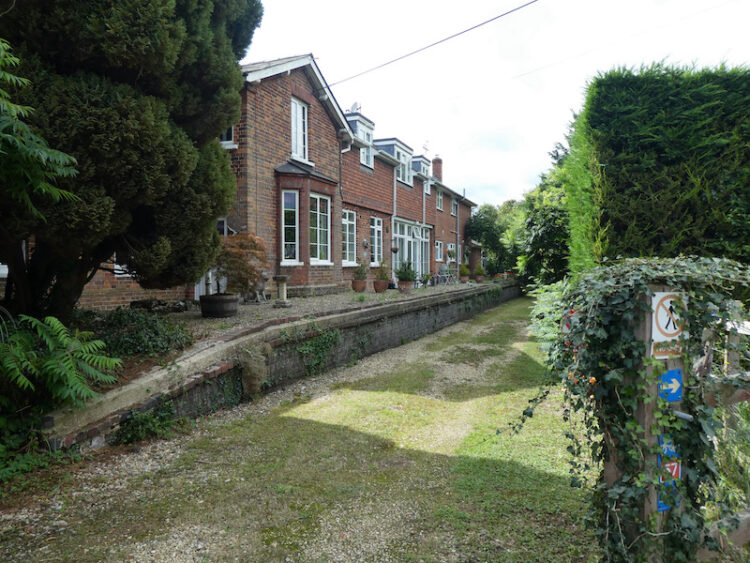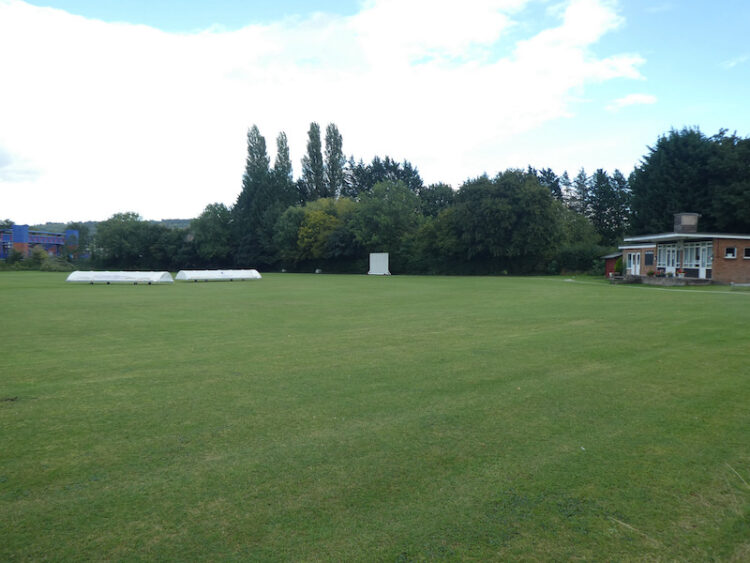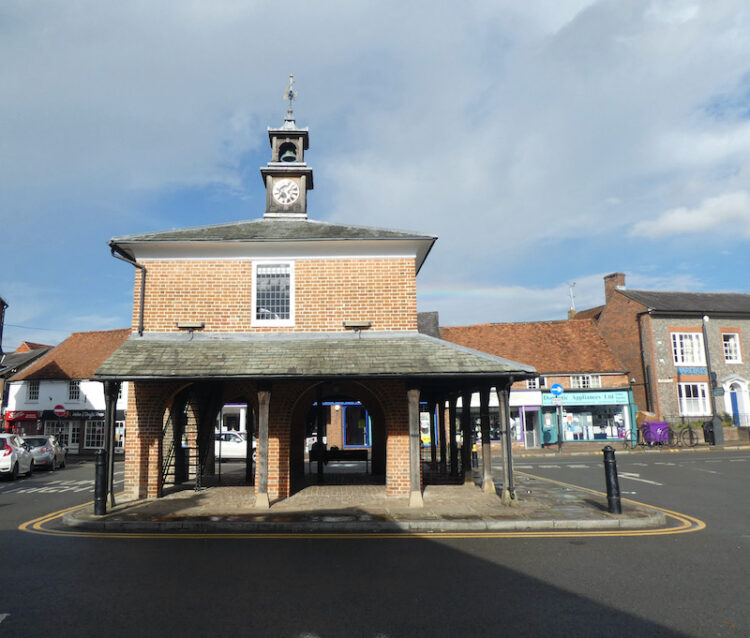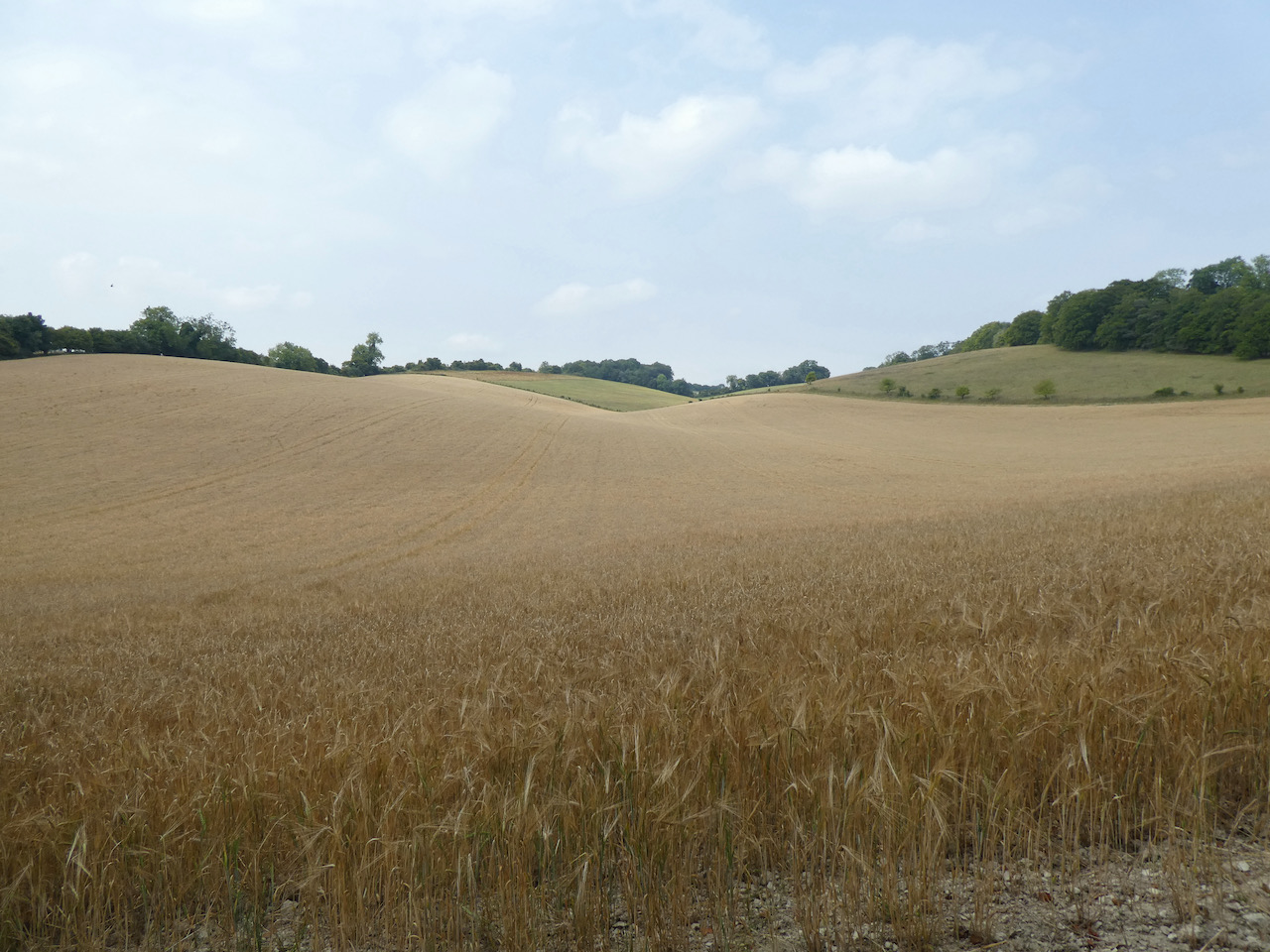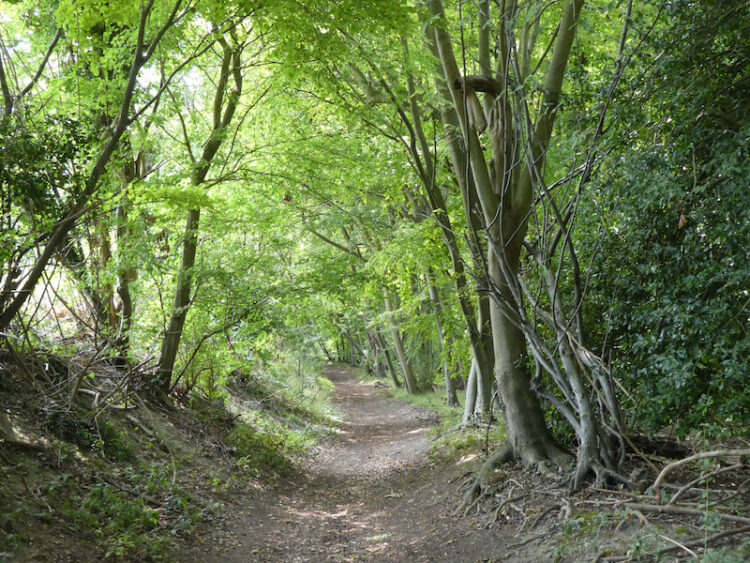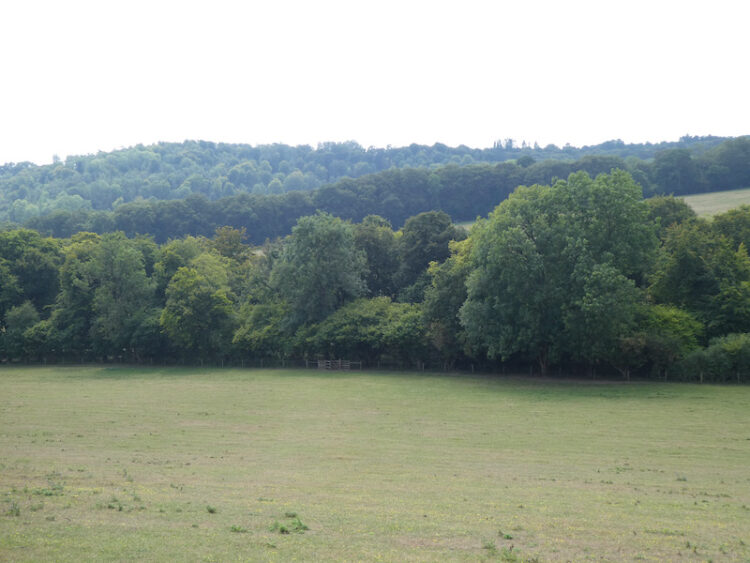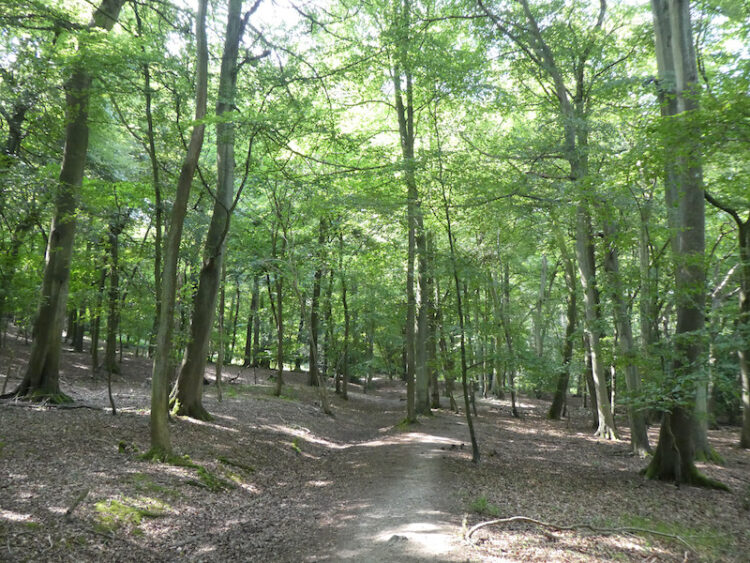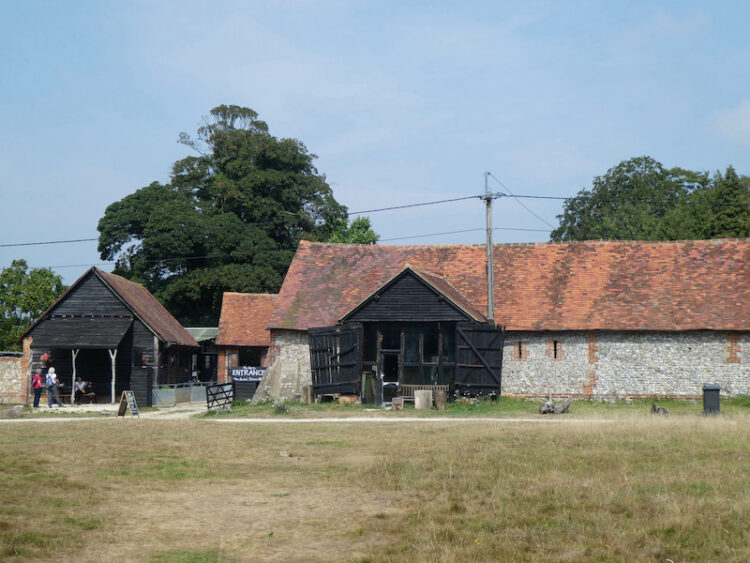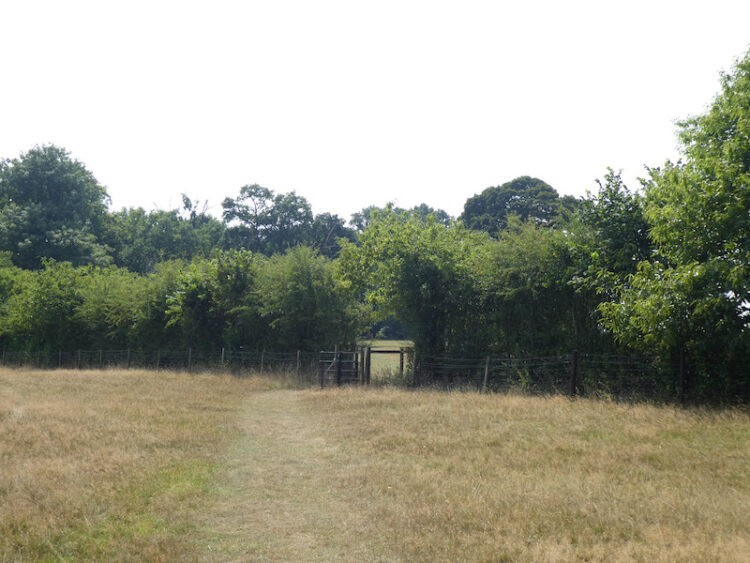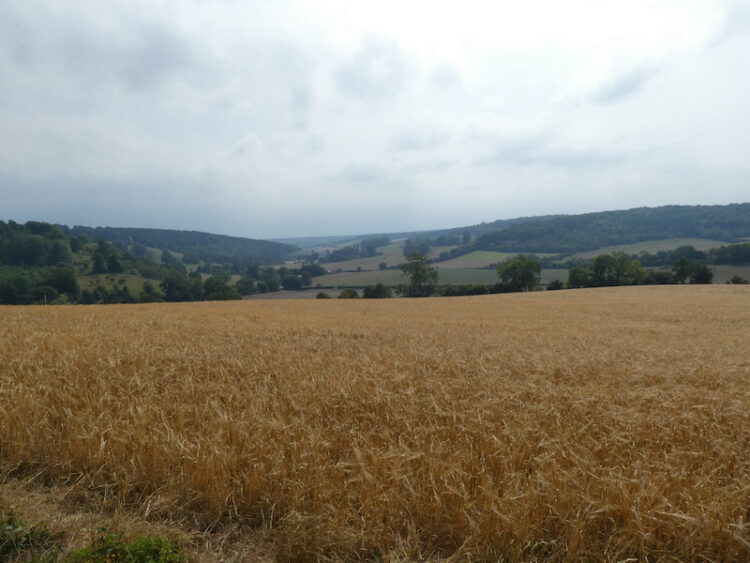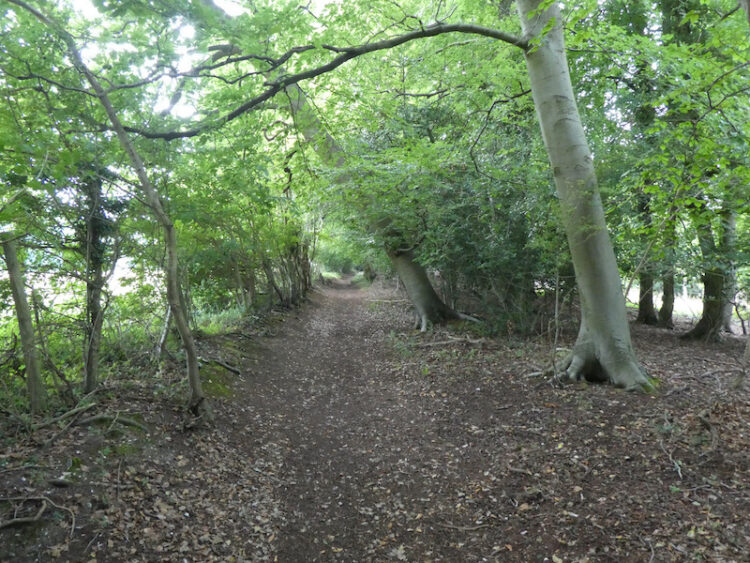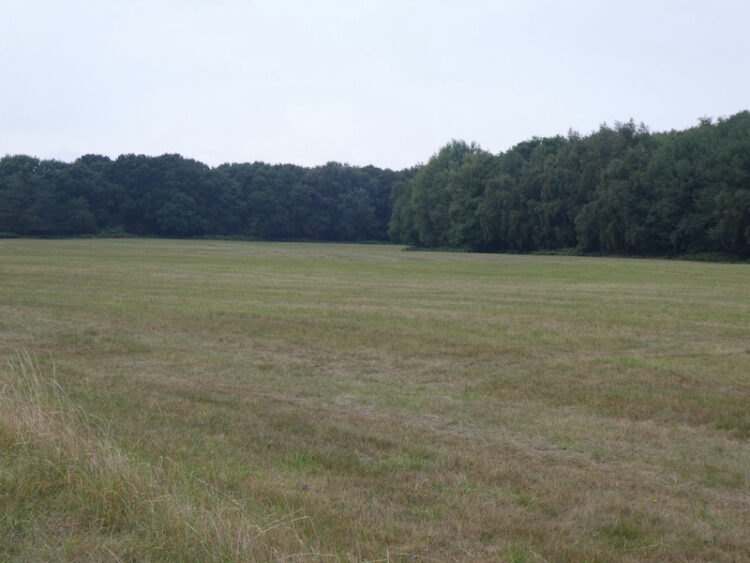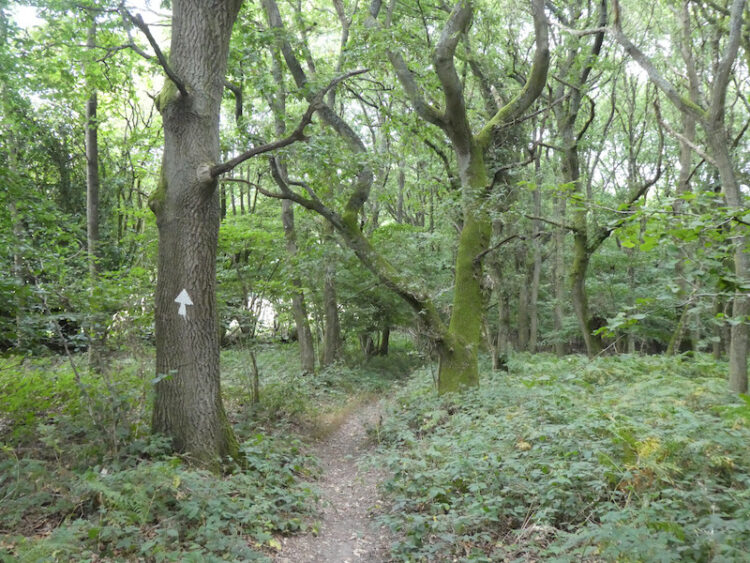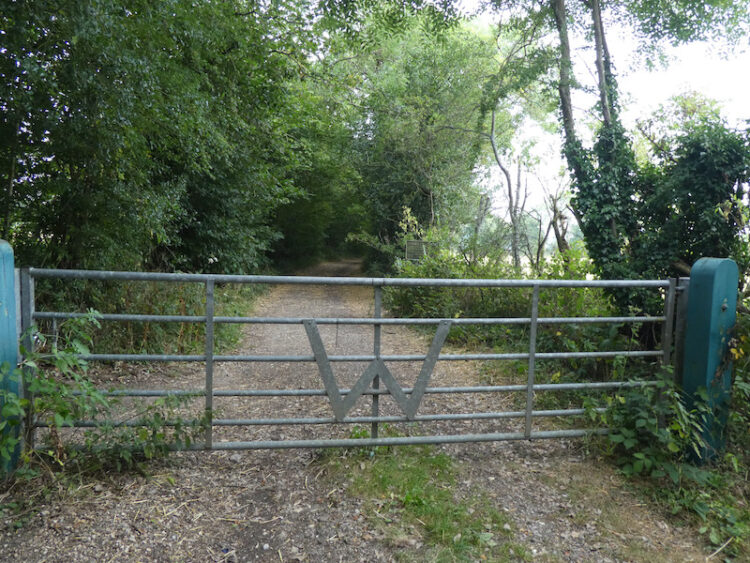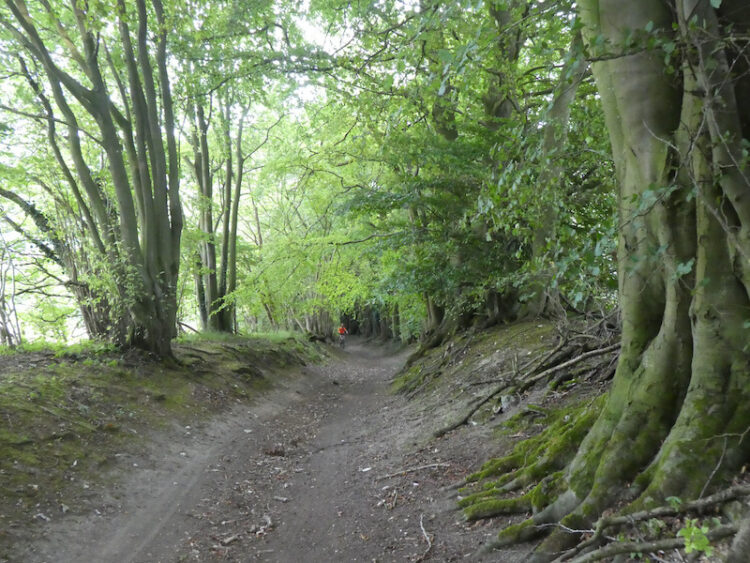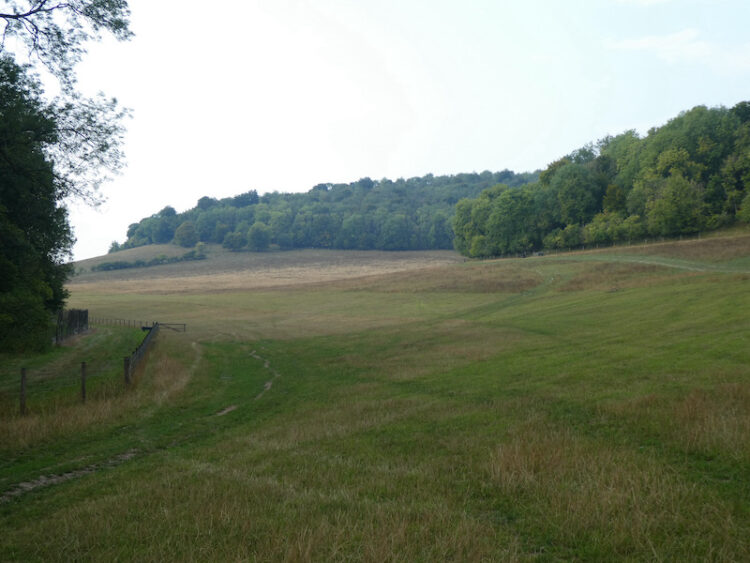Most of my walking from Cholsey Grange CL has been to the west of the M40, occasionally I have wandered to the other side of the motorway but I have not really explored that area in detail. So my walk today will take me into new territory.
I set off leaving Cholsey Grange by the farm track heading downhill to the footpath leading into Penley Wood.

In the woods I turn left and follow the footpath along the bottom of the valley for 200 metres and then at a junction of paths turn right to head uphill on a steep path. This is the sort of hill that makes the calf muscles burn and lungs hurt, but I am determined to reach the top without stopping. The path meets a kissing gate leading into a field.

The route goes directly across the field to the far side and then turns right along the hedge line before going through a gate. The way-markers then direct me to a fenced path leading to steps up to a minor road where I turn left and cross the M40. On the far side of the motorway I turn right down a tarmac driveway and after 100 metres turn left onto a way-marked footpath into East Wood.
The footpath through these woods is well marked as it initially heads to the east and then turns towards the north.

At a junction of rides the path goes to the right and heads east towards the edge of the woodland. At a fork in the path I go to the left and stay close to the edge of the woods to reach the A40 which I cross with care and join a footpath on the far side which heads downhill towards a copse.

The path through the trees leads to a minor lane where I turn left and walk for 300 metres to reach a junction with a track. Here I turn right towards Ashridge Farm.

At a junction of tracks close to Ashridge Farm I turn right to take the track leading towards Bottom Wood.

The track leads to a gate into the woods. Now I turn left and follow a broad track through this attractive area of woodland. An information board explains the 36 acre Bottom Wood is owned by the Chiltern Society and was given to the charity in 1984 by nearby resident Cynthia Ercolani. Later research suggest that Cynthia was the wife of Lucian Ercolani whose family ran the Ercol furniture business based in High Wycombe.

Staying with the track I go through the bottom of the woods and reach a concrete slab which is covering a well. Apparently this well is 100 feet deep and was once used to provide water to the nearby hamlets of Beacon’s Bottom and Radnage Common.

Apparently during World War II much of the woodland was felled to provide wood for Bryant and May to produce matches. So the majority of the trees here were planted after 1940.

The route through the bottom of these woods is an old packhorse trail which linked Piddington to Beacon’s Bottom. After leaving the trees the route continues along a track to reach Ham Farm.

After passing the farm I reach the A40 and cross to join a minor road opposite which is besides the Dashwood Roadhouse pub.

After 50 metres I leave the road and turn right onto a farm track heading towards Hillingdon Farm.

After passing the farm I continue to reach a crossing of paths, here I continue straight on through a belt of trees towards Barn Wood.

After 300 metres I reach the edge of Barn Wood at a junction of paths, here I continue straight on through the woodland following a path towards Leygrove’s Wood.

On entering Leygrove’s Wood I carry straight on now on a broad track.

On leaving the woods I go through a small clearing and then enter the edge of Pound Wood.

I stay with the track into Pound Wood and then fork left onto a footpath that heads steadily uphill to reach a tunnel under the M40.

On the far side of the tunnel I follow the track up to the B482 and turn right to join a pavement and pass a school. I now cross the road and then a village green and follow the lane into Cadmore End. After passing the church I turn right on a footpath along a track heading out of the village.

At a junction of paths I turn left to stay on the track as it heads downhill to reach the edge of Hanger Wood. Just as I enter the trees the path divides, I take the right fork.

About two hundred metres further on I take a footpath on the right which heads through the trees before descending to reach a field of pasture.

The path heads along the edge of the field steeply downhill to a minor road, Chequers Lane, where I turn right and then very soon after turn left along a track with footpath way-markers. I now follow this track through the bottom of the valley towards Twigside Bottom.

After a mile and a half on this path I reach a junction of paths at a clearing and turn left to head uphill towards Cholsey Grange.

This path brings me to the metal gate at the south side of the caravan site. This has been a very interesting 10.5 mile walk in some cracking bits of woodland. I will have to do another walk to Bottom Wood with Lynnie when she joins me next week.
You can view this 10.5 mile walk on OS Maps and download the GPX File Here
To follow my walk you will need Ordnance Survey Explorer Map 171 – Chiltern Hills West
7th August 2021
© Two Dogs and an Awning (2021)
All information on this site is provided free of charge and in good faith and no liability is accepted in respect of damage, loss or injury which might result from it. To the best of my knowledge the routes are entirely on public rights of way or within areas that are open for public access.
Walking can be hazardous and is done entirely at your own risk. It is your responsibility to check your route and navigate using a map and compass.
